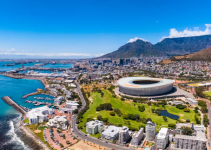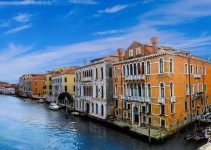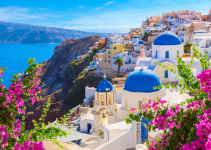Nashville has this magnetic pull. Maybe it’s the promise of live music spilling out of every doorway, or the way the city manages to feel both wildly energetic and strangely welcoming at the same time. You’ve probably seen the photos—neon lights, cowboy boots, guitars everywhere—and decided this is your next adventure.
But here’s the thing about Nashville. It’s not quite what the Instagram reels make it out to be. Yes, there’s magic here, but there are also tourist traps that’ll drain your wallet faster than you can say “y’all.” There are timing mistakes that’ll have you sweating through your shirt in 95-degree heat. And there are spots you’ll miss entirely if you follow the same tired itinerary everyone else does.
I’m going to save you from the headaches I’ve watched countless visitors stumble into. These aren’t just minor inconveniences. They’re the difference between coming home with stories worth telling and wondering why everyone raves about Music City in the first place.

Things to Avoid in Nashville
You’re smart enough to skip the obvious mistakes, but Nashville has some sneaky pitfalls that catch even the savvy travelers. Here’s what to watch out for if you want to experience the real city.
1. Staying Glued to Lower Broadway
Lower Broadway is what you see in every Nashville video. The honky-tonks stack up side by side, each one louder than the last, each band trying to outdo the one next door. It’s a spectacle. It’s also exhausting, expensive, and frankly, it’s not really Nashville.
Don’t get me wrong—you should absolutely walk down Broadway at least once. The energy is undeniable. But if you spend your entire trip within those four blocks, you’re missing the point entirely. The bands on Broadway are good, sure, but they’re playing the same rotation of covers to crowds of bachelorette parties and guys in matching t-shirts. You’ll hear “Wagon Wheel” approximately 47 times in a single evening.
The real music scene exists in smaller venues across the city. The Bluebird Cafe, where songwriters perform their original work in hushed reverence. The Basement East, where you might catch the next big thing before anyone else knows their name. Robert’s Western World, which is technically on Broadway but feels different—more authentic, less performative. These places don’t charge cover just to walk through the door. They don’t blast music so loud you can’t hear yourself think.
Beyond the music, sticking to Broadway means you’re eating overpriced mediocre food and paying $15 for a beer that costs $6 anywhere else. You’re surrounding yourself with other tourists instead of locals. You’re getting a sanitized, commercialized version of something that’s actually much cooler than what they’re selling you.
2. Attempting to Drive and Park Downtown
Your rental car seems like freedom. It’s not. Downtown Nashville turns that freedom into a special kind of stress you didn’t know existed.
The streets weren’t designed for the current population. They certainly weren’t designed for the 15 million tourists who visit annually. What looks like a quick drive on your GPS becomes a 40-minute ordeal of one-way streets, aggressive drivers, and pedestrians crossing wherever they feel like it. Finding parking is its own adventure—the kind where you circle the same blocks repeatedly, watching prices climb from $20 to $35 to $50, depending on how desperate they think you are.
Rideshare is your friend here. So are scooters, though watch out for them because apparently, traffic laws don’t apply to Bird scooters in Nashville. The city has walkable pockets, and you can get between them affordably without the headache of parking. Your hotel likely charges $40 a night for parking anyway, so you’re not actually saving money by driving.
If you’re staying outside the main areas, drive to a spot with free street parking in a neighborhood like East Nashville or 12 South, then ride-share or walk to your actual destination. This hybrid approach gives you flexibility without the downtown driving nightmare.
3. Visiting in the Dead of Summer Without a Plan
Nashville in July and August is not cute. The heat index regularly pushes past 105 degrees. The humidity makes the air feel thick enough to chew. You’ll sweat through your clothes before you finish your morning coffee.
This wouldn’t be such a disaster if you planned around it. But visitors constantly underestimate how brutal Southern summer heat can be. They book afternoon walking tours. They plan to explore neighborhoods on foot during peak sun hours. They wear jeans and boots because that’s the Nashville aesthetic, and then they wonder why they feel like they’re melting.
The locals know better. They move slowly in summer. They plan indoor activities during the hottest part of the day—museums, shopping, long lunches with good air conditioning. They save outdoor activities for early morning or evening. They dress in light, breathable fabrics regardless of what looks cute for photos.
Spring and fall are genuinely better times to visit. The weather is gorgeous, the city feels more manageable, and you won’t spend half your budget on cold drinks just trying to stay hydrated. But if summer is your only option, respect the heat. Start your days early. Take breaks. Accept that you’ll be slower-paced than usual. Nobody looks good when they’re suffering from heat exhaustion.
4. Eating Only Hot Chicken and BBQ
Yes, Nashville hot chicken is incredible. Prince’s Hot Chicken Shack serves the kind of food that makes you understand why people wait in line for an hour. Hattie B’s offers a slightly more accessible version that’s still genuinely good. You should absolutely try hot chicken while you’re here.
But Nashville’s food scene is so much bigger and more interesting than the two dishes tourists know about. This city has James Beard-nominated chefs creating innovative cuisine. There are incredible Ethiopian restaurants, authentic Mexican taquerias, upscale Italian spots, and fusion concepts that’ll make you rethink what Southern food can be.
The Pharmacy in East Nashville serves German-inspired Southern food that sounds weird and tastes amazing. Husk showcases traditional Southern ingredients in ways that feel both nostalgic and new. Rolf and Daughters make pasta that Italians would approve of. Epice serves Lebanese food that locals rave about. You have options here that have nothing to do with fried chicken or pulled pork.
Food also gives you an excuse to explore different neighborhoods. The Nations has great international cuisine. Wedgewood-Houston is becoming a food destination. Germantown has upscale options in historic buildings. Each area has its own personality, and you’ll miss all of it if you stick to the meat-and-three spots that guidebooks from 2015 recommended.
5. Skipping the Neighborhoods Beyond Downtown
Downtown gets all the attention. The neighborhoods are where the actual city lives.
East Nashville feels like what Nashville probably felt like 20 years ago—artsy, a little rough around the edges, genuinely cool without trying too hard. Five Points has vintage shops, coffee roasters, and bars where you’ll actually talk to locals. The murals here are better than the ones downtown because they’re not designed for tourist photos.
12 South is polished and pretty. It’s where you’ll find boutique shopping, the famous “I believe in Nashville” mural, and brunch spots that require reservations. It feels more upscale, less gritty, but it’s charming in its own way. The Gulch is similar—modern, sleek, Instagram-ready. It’s not everyone’s vibe, but the rooftop bars have great views.
Germantown offers historic architecture and restaurants that locals actually frequent. The farmers’ market here operates year-round and feels authentic rather than performative. Marathon Village houses a bunch of creative businesses, including a distillery and antique shops, all in repurposed industrial buildings.
Each neighborhood takes maybe 30 minutes to explore properly. You can easily hit two or three in a day. The effort pays off because you’ll see the version of Nashville that residents actually love, not the version packaged for tourists.
6. Showing Up Without Reservations
Nashville has gotten significantly more popular. The infrastructure hasn’t quite caught up.
This creates a problem for the “we’ll figure it out when we get there” travelers. The hot restaurants book up weeks in advance. Popular brunch spots have two-hour waits on weekends. Even casual places can turn you away on busy nights. Tours sell out. The good hotels fill up during CMA Fest, marathon weekend, and basically any time there’s decent weather.
Making reservations feels less spontaneous, but it saves you from the disappointment of standing outside a restaurant you really wanted to try, watching them turn you away because they’re fully booked. It saves you from settling for your fourth or fifth choice because nothing else has availability.
This applies to more than just restaurants. If you want to tour the Ryman Auditorium or visit Belle Meade Plantation, book ahead. If there’s a specific band you want to see, buy tickets early—Nashville shows sell out faster than you’d expect. If you need a rental car during peak season, reserve it in advance or you’ll pay double.
The sweet spot is planning your “must-dos” and leaving some flexibility for wandering. Book your Friday dinner reservation and your Saturday tour, but leave Sunday open for whatever you stumble across. This gives you structure without feeling overly scheduled.
7. Assuming It’s All Country Music
Nashville calls itself Music City, not Country Music City, and that distinction matters more than you’d think.
The country music history is real and worth exploring. The Country Music Hall of Fame is genuinely fascinating even if you’re not a fan of the genre. But the current music scene spans rock, indie, pop, hip-hop, soul, punk, and everything in between. Jack White has a recording studio here. The Black Keys recorded here. Kings of Leon started here. The city attracts musicians from every genre because the talent pool and infrastructure support basically any type of music.
Walking into a random venue on any given night, you’re as likely to hear a rock band or a folk singer as you are to hear traditional country. Third Man Records, Jack White’s label and store, hosts concerts that have nothing to do with country music. The basement venues along the east side showcase indie and alternative acts. Hip-hop thrives here in ways that surprise people who only know Nashville’s mainstream reputation.
Limiting yourself to country-only spots means you’ll miss some of the best live music in the city. The musicians here are incredibly talented regardless of genre, and you never know what you might discover if you stay open-minded. Some of my favorite Nashville music memories involve stumbling into shows I knew nothing about and being completely blown away by the talent on stage.
8. Paying Tourist Prices for Accommodations
The hotels along Broadway and in the Gulch know they can charge $400 a night because tourists will pay it. You’re paying for location and nothing else.
Here’s a secret: Nashville is not that big. Staying slightly outside the main tourist zone saves you hundreds of dollars and often gets you better amenities. Neighborhoods like Sylvan Park, Nations, or Inglewood have Airbnbs and smaller hotels at half the price. You’re a 10-minute rideshare from downtown. The money you save on lodging pays for your dinners out.
The boutique hotels in East Nashville offer character and charm that the big chains don’t have. They’re still convenient but feel more connected to the actual city. Some have free parking, which alone saves you $40 a night. Many include breakfast. The tradeoff is you’re not stumbling distance from Broadway, but frankly, that’s a feature not a bug.
If you insist on staying downtown, book way in advance and watch for deals. Prices fluctuate wildly based on events happening in the city. A hotel that’s $450 on a Friday might be $200 on a Tuesday. Being flexible with your dates can save you a ridiculous amount of money.
Also, check what’s included. That $300-a-night hotel charging $50 for parking, $30 for breakfast, and $35 for wifi suddenly costs $415 before you’ve done anything. Meanwhile, the $180 spot in East Nashville includes all that and has better reviews. Do the actual math.
9. Overlooking the Weather Beyond Summer
Everyone knows summer is hot. Not everyone realizes that Nashville weather is wildly unpredictable in every other season too.
Spring is gorgeous, but it comes with severe weather. Tennessee sits in a part of the country where tornado warnings are a regular spring occurrence. A beautiful 75-degree morning can turn into a stormy afternoon with warnings to take shelter. I’m not trying to scare you off—the odds of being directly impacted are low—but you should have a plan and pay attention to weather alerts.
Winter is mild compared to the North, but it’s not warm. It gets cold and damp in a way that seeps into your bones. The city isn’t great at handling ice and snow, so even a small winter storm can shut everything down. Locals panic-buy bread and milk at the first snowflake. If you’re visiting in winter, bring layers and have backup plans in case the weather cancels your outdoor activities.
Fall is probably the safest bet weather-wise, but even then, you’ll get random temperature swings. It might be 85 degrees one day and 55 the next. The locals joke that if you don’t like the weather in Tennessee, wait five minutes. Pack layers regardless of when you visit, and check the forecast religiously.
10. Following the Same Itinerary as Everyone Else
There’s a standard Nashville tourist path. You’ve probably seen it recommended a dozen times: visit the Parthenon, tour the Ryman, walk down Broadway, take a photo at the Batman building, eat hot chicken, go to a honky-tonk. It’s fine. It’s also the same experience thousands of other people have every single weekend.
The best Nashville experiences happen when you veer off that path. Taking a guided food tour through neighborhoods you’d never find on your own. Catching a songwriter’s round at a tiny venue where the artist is five feet away from you. Visiting the Frist Art Museum on a day when they have a special exhibition. Spending an afternoon at Radnor Lake, walking trails that feel a million miles from the honky-tonks. Finding that coffee shop or bookstore, or taco spot that becomes your favorite place, even though it’s not on any list.
Talk to locals if you get the chance. Ask your Lyft driver where they eat. Chat with the person next to you at the bar about their favorite spots. Follow the “if you know, you know” recommendations that aren’t plastered all over social media. These are the experiences that make Nashville memorable rather than just another city you checked off your list.
The touristy stuff exists for a reason—it’s genuinely worth seeing. But don’t let it be the only thing you see. Leave room for discovery. Be willing to get a little lost. Say yes to suggestions that sound weird or unfamiliar. The standard itinerary gives you the Nashville that’s been packaged and sold. The deviation gives you the Nashville that residents actually love.
Wrapping Up
Nashville rewards the curious and punishes the lazy. Show up with a little planning, a lot of openness, and a willingness to venture beyond the obvious, and you’ll leave understanding why people fall in love with this city.
Skip the mistakes that trap everyone else, and you’ll have the trip your friends will be jealous of. The city is waiting for you, and trust me, it’s better than the brochures promised.


